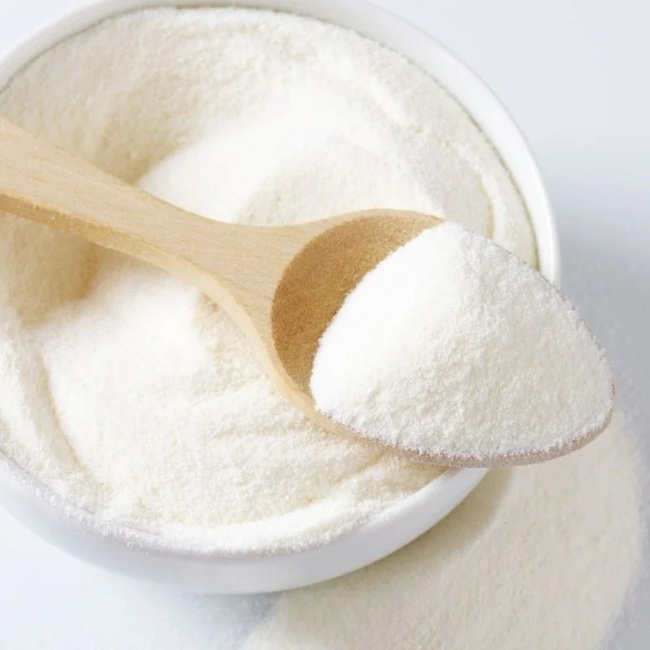
The subject of this article offers a few different scenarios: 1. to determine your risk of developing type 2 diabetes when you are lactose intolerant. 2. If you already have Type 2 diabetes what is your chance/ risk of developing lactose intolerance.
Dairy reduce the risk of developing Type 2 diabetes as well as managing glucose levels in those who have Type 2 diabetes. Along with helping to control glucose levels, dairy products contain many nutrients that are vital to developing healthy bones and teeth.
However, there are individuals who are not able to consume dairy products in the recommended amounts because their bodies are not able to break down lactose. Lactose is found in milk and milk products and someone who is lactose intolerance finds it difficult to consume dairy products. This intolerance can be managed by working with a dietitian to properly limit dairy intake or possibly taking a supplement.
Contents
Benefits of a Diet that Includes Dairy Products
Dairy is an important part of a nutritious diet because it often offers healthy sources of protein, calcium, potassium, and vitamin D. Each of these nutrients plays a significant role in maintaining a healthy body. Calcium is required for healthy teeth and bones. In most American diets, dairy products are the main source of calcium. Potassium is important because it is helpful in maintaining a healthy blood pressure.
Further reading:
Vitamin D allows the body to maintain the appropriate levels of calcium which makes it an essential vitamin in the diet. When dairy products are consumed regularly, there is a reduced risk of osteoporosis, cardiovascular disease, high blood pressure, and Type 2 diabetes.
Full Fat Dairy vs Low Fat
When choosing dairy products at a grocery store, you will find that there are many different choices regarding the fat content in the products.
You will find various options including full-fat (like whole milk or yogurt made with whole milk) and low-fat (like 2% or skim milk and cheeses made with low-fat milk). The difference between these options is how much milk fat is found in the products.
It is often recommended to reduce the amount of fat you consume in your diet to reduce the number of calories consumed each day. This will aid in weight loss and the health benefits that occur with that, but studies have shown that consuming full-fat dairy products may not be as bad as previously thought.
Fat is NOT the Enemy
As mentioned, the main reason that low-fat dairy products are recommended is to reduce calorie intake and promote weight loss. When fat is reduced in the diet, individuals find that they are still hungry and consume calories from other sources which are often high in carbohydrates. This extra food consumption can easily cause calorie intake to be higher than it would have been if they had eaten the full-fat option.
This will also negate the effects of the low-fat choice and can lead to an increase in weight. It is recommended to focus on eating more “real foods” that don’t contain added sugars and less processed foods. Reducing the amount of sugars and other processed carbohydrates will limit calorie intake while allowing the individual to still feel full and not need to consume excess calories from other sources. Consuming diets that contain full-fat dairy products may help the individual to lose weight and experience the health benefits that weight loss causes.
Full Fat Dairy May Actually Reduce Your Risk
You may have been told that full-fat dairy products are bad for your health and should be avoided, but they can have a positive impact on your health.
There is not a definite answer as to why full-fat products reduce the risk for diabetes. One thought on why risk is lowered involves the presence of probiotics found in yogurt. These probiotics may have an effect on intestinal health that improves the way that the body utilizes insulin. If this improvement does occur, the risk for Type 2 diabetes would decrease.
I recommend you read the following articles:
Another possible explanation is that the fatty acids in dairy improve the body’s ability to use insulin. It could also be linked to the calcium found in dairy products. Calcium is an important nutrient in the body and it may have an effect on diabetes risk, but how it lowers the risk is not understood at this time.
The reasoning could also be simpler; when an individual consumes full-fat dairy products, they aren’t left hungry and they will consume less junk food. The decrease in the amount of junk food in the diet will decrease the risk of developing Type 2 diabetes because less added sugars and processed foods are being consumed.
Lactose Intolerance and the Symptoms
Lactose is the type of sugar that is naturally occurring in milk and products made with milk (yogurt, cheese, ice cream, etc.). When someone is lactose intolerant, it means that their body is not able to digest lactose properly. This is caused by an inadequate amount of lactase (an enzyme that breaks down lactose) secreted by the small intestine during digestion. When undigested lactose enters the colon, gas is created causing discomfort.
Symptoms of lactose intolerance can occur as soon as 30 minutes after milk is consumed or up to 2 hours after it is consumed. The symptoms experienced can be mild or severe and can include: bloating, cramps, diarrhea, gas that may be painful, and nausea.
The amount of milk products that can be consumed before the symptoms arise will also depend upon the degree of intolerance of the individual. The symptoms can be controlled through lactose supplements, but it is always best to consult with your physician before beginning any supplements. Lactose intolerance can cause unpleasant symptoms but is manageable through diet limitations and possibly supplementation.
Is Lactose Intolerance a Precursor to Other Food Allergies?
Lactose intolerance is different from a food allergy because it is not a reaction to the food but the inability to digest it properly. Allergic reactions to foods are more severe than the symptoms of intolerances. There is no evidence to support that lactose intolerance is a precursor to other food allergies. Lactose intolerance can occur because of a genetic link or due to the normal aging process.
There is a large percentage of the elderly population that is intolerant to lactose, and this is because the body loses the ability to produce adequate amounts of lactase as it ages. Lactose intolerance is not the same as an allergy and must be treated differently.
The Systemic Connection between Developing Type 2 Diabetes
A nutritious diet with protein-rich dairy products regularly will help to control the glycemic health of the individual. This is important to all individuals, but especially to those with Type 2 diabetes. Controlling the glycemic health will help to control glucose levels and therefore improve the health of the individual.
The varied diet will allow the individual to be exposed to different forms of dairy as well as different type of protein, lactose, probiotics, and amino acids. If the individual continues to consume this diet with adequate dairy products, they are more likely to control their glucose levels and their health.
If You Have Type 2 Diabetes, what are Your Chances of Developing Lactose Intolerance?
Many individuals who have Type 2 diabetes report experiencing symptoms of lactose intolerance. The symptoms experienced by those with Type 2 diabetes could be true lactose intolerance and should therefore be diagnosed by a physician. The intolerance could also come from the body’s inability to process insulin.
Since lactose is a sugar found in milk products, the body may not be able to process it as well due to the inability to control insulin. This does not mean that every person with Type 2 diabetes will develop lactose intolerance, but that they may just have to closely monitor their diet in order to avoid any adverse reactions to food and their glucose levels.
Is There Anything YOU can do NOW?
It is never “too late” to start a nutritious diet in order to manage diabetes. An effective way to begin a more nutritious diet is to find places to include dairy products in your current diet. Adding a glass of milk to breakfast or replacing your typical dessert with yogurt can go a long way. You may have to experiment with some choices to find what dairy products you like and that will help manage your glucose levels.
The Bittersweet Conclusion
Consuming dairy products in the recommended amounts has been shown to decrease the risk of developing Type 2 diabetes and manage glucose levels in those who already have diabetes.
Although this connection has been shown by many different studies, there are individuals who are not able to consume dairy because of their lactose intolerance. When intolerance is present, it is important that the individual get assistance from a physician or dietitian in order to get the adequate amount of dairy from other sources. Lactose intolerance is a common food intolerance and can be managed. Individuals with Type 2 diabetes should strongly consider adding dairy products into their diet to better manage their glucose levels and improve their glycemic health. So that's our post on lactose and diabetes type 2, hope you found it informative.
TheDiabetesCouncil Article | Reviewed by Dr. Sergii Vasyliuk MD on May 29, 2020
References
- http://journals.plos.org/plosone/article?id=10.1371/journal.pone.0073965
- http://www.webmd.com/diabetes/news/20141205/dairy_diabetes_risk#1
- http://www.npr.org/sections/thesalt/2016/04/18/474403311/the-full-fat-paradox-dairy-fat-linked-to-lower-diabetes-risk
- https://www.choosemyplate.gov/dairy-nutrients-health
- http://www.webmd.com/digestive-disorders/lactose-intolerance-14/primer
- http://advances.nutrition.org/content/6/3/245.full











